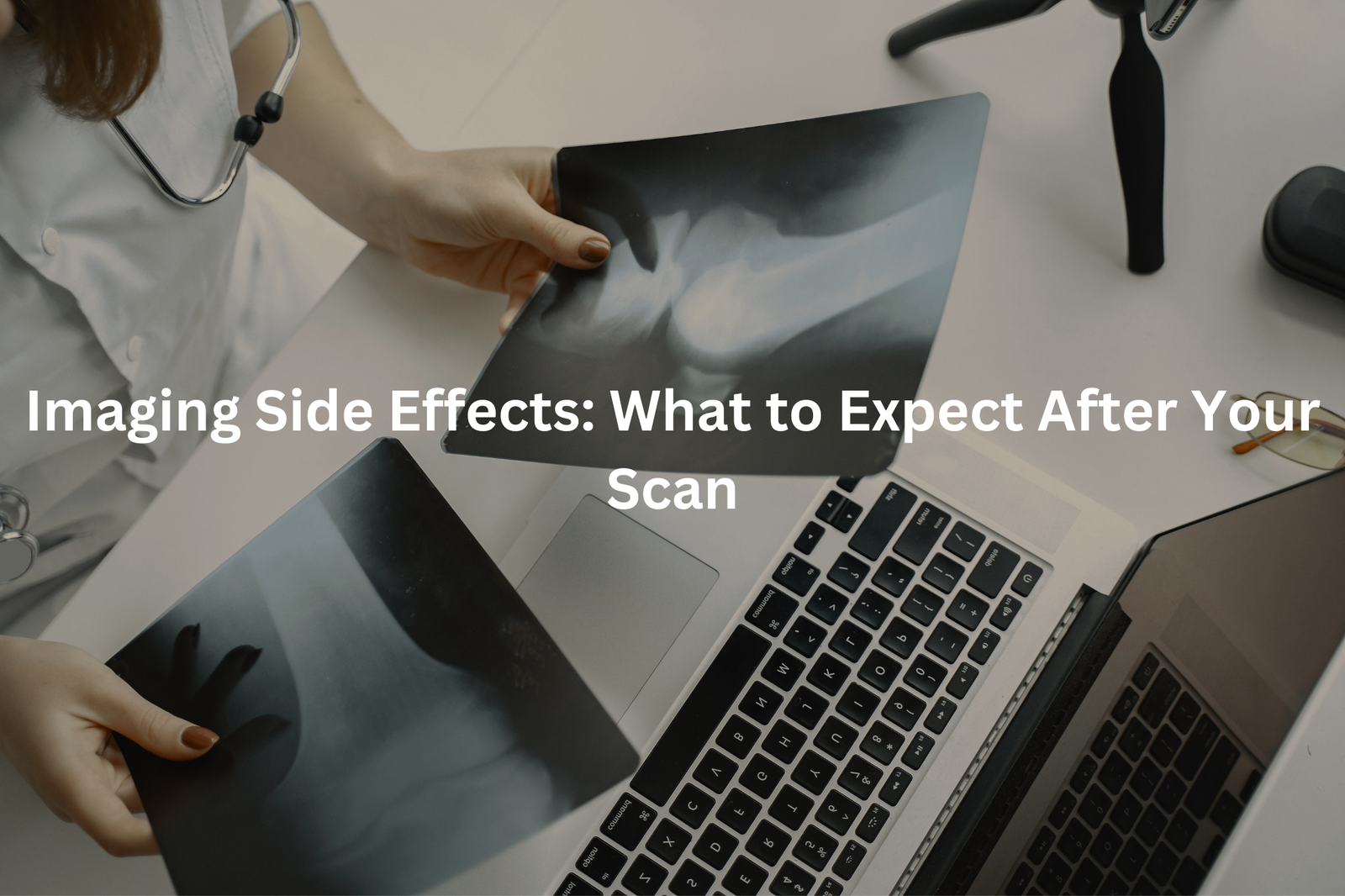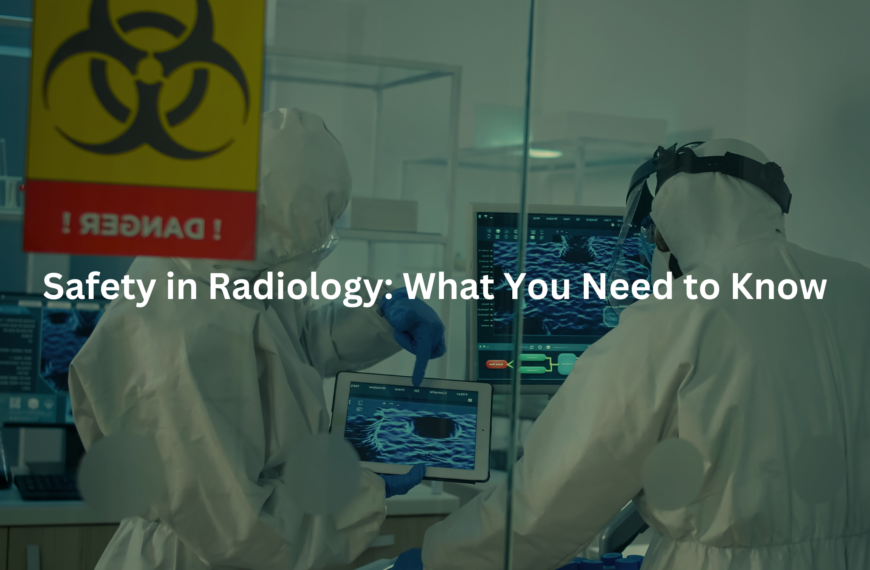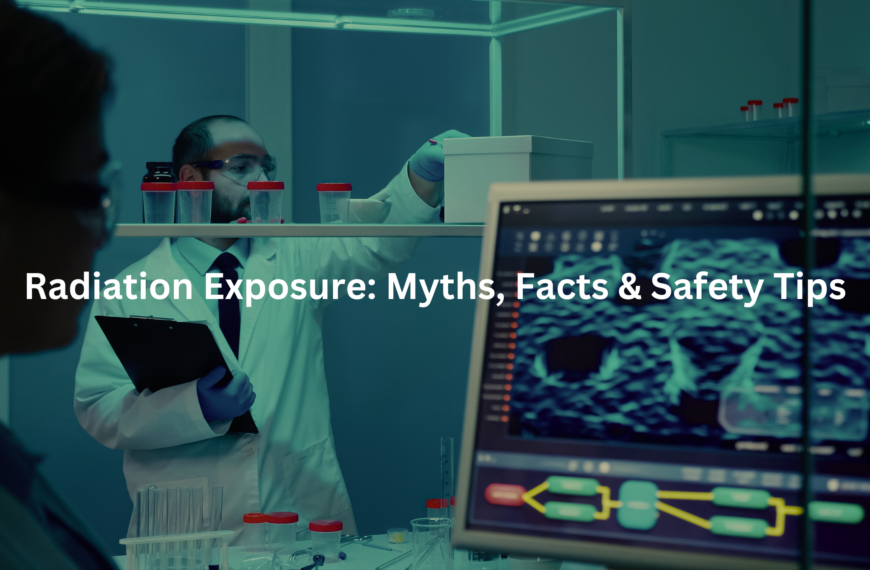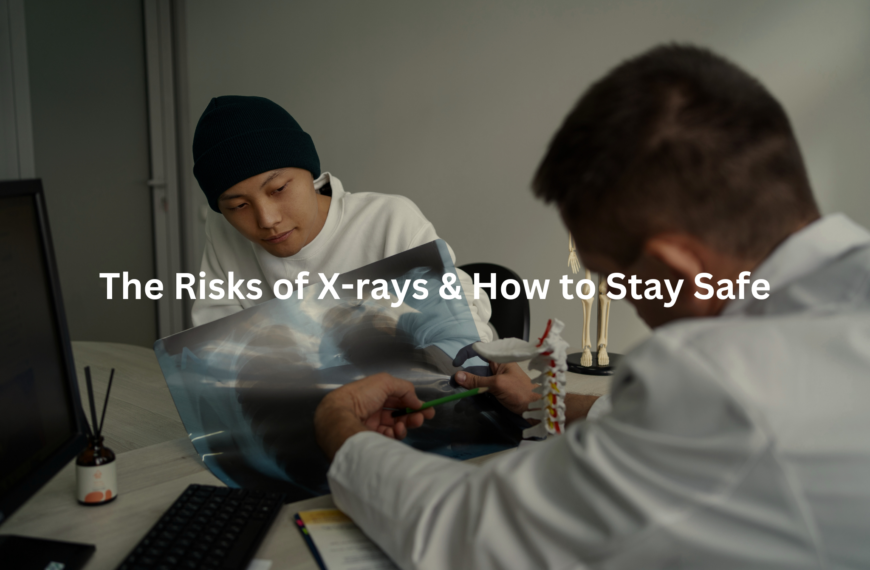Imaging side effects like nausea or dizziness? Learn what to expect after CT, MRI, or VQ scans and how to manage any discomfort. Stay informed, stay safe.
Medical imaging tests might cause unwanted effects in patients after their procedures. CT scans, MRIs, and VQ scans give doctors a clear view inside the body, yet some people experience discomfort afterwards. The contrast dye used in these tests can trigger allergic reactions in certain patients, causing symptoms like itching or rashes. Other common effects include headaches and tiredness that might last several hours.
Patients should watch for any unusual feelings after their scans and inform their doctors straight away. Before undergoing any imaging, asking about possible side effects helps patients know what to expect. This knowledge makes the whole process much safer. Keep reading to learn more about staying safe during imaging tests!
Key Takeaway
- Imaging tests can cause side effects like allergic reactions to contrast dye and nausea.
- Most side effects are mild, but some can be serious, like skin reactions or shortness of breath.
- It’s important to talk to your healthcare provider about any concerns you have.
Imaging Side Effects
Medical imaging with contrast dyes needs more attention than most patients think. These special dyes, used in CT scans and MRIs, make internal organs show up clearer on scans (iodine for CT scans, gadolinium for MRIs).
Side effects from contrast materials can include(1):
• Nausea and vomiting (affects 5% of patients)
• Metallic taste in mouth
• Skin reactions like itching
• Dry mouth symptoms
While most reactions stay mild, some patients might face more serious issues. Breathing difficulties and swelling occur in rare cases (1 in 100,000). People with kidney problems need extra caution before undergoing contrast scans.
Reactions don’t always show up straight away. Some patients notice symptoms hours after their scan, which makes monitoring important.
Medical staff recommend drinking plenty of water after contrast scans to help flush the dye from the body. Patients should inform their doctors of any previous reactions to contrast materials and report new symptoms, even if they appear later.
Contrast Material Reactions
Sources: Radiology Video-Radiology Made Esay.
Contrast scans bring unexpected sensations to patients during medical imaging. The injection of dye creates a warm feeling across the chest and leaves an unusual taste in the mouth (typically metallic or bitter).
These contrast materials, which contain iodine for CT scans or gadolinium for MRIs, make internal structures more visible in medical images. Most patients experience mild effects that pass quickly:
- Warmth or flushing (lasting 30–60 seconds)
- Metallic taste
- Mild nausea
- Temporary itching
More serious reactions need immediate medical attention:
- Difficulty breathing
- Facial swelling
- Changes in heartbeat
For patients with kidney problems, doctors might adjust the contrast dose or choose different imaging methods. The contrast material typically clears from the body within 24 hours.
Drinking 2–3 litres of water after the scan helps flush out the contrast. Patients should inform their doctor about any allergies before the procedure and report unusual symptoms, even if they appear hours later.
Allergic Reactions to Contrast Dye

Contrast dye reactions during medical scans need quick attention. These reactions range from mild discomfort to severe complications that require immediate medical care.
Medical imaging with contrast dye (used to highlight blood vessels and organs) carries some risks(2). People with allergies to shellfish, iodine, or certain medicines face higher chances of reactions.
Common symptoms include:
• Itchy skin with raised lumps
• Facial swelling, particularly around the eyes and lips
• Blocked nose and sneezing
Severe reactions occur in roughly 0.01% of cases:
• Difficulty breathing
• Blood pressure drops below 90/60
• Stomach upset with vomiting
Most reactions start within 15 minutes of injection, though some develop over 24 hours. Patients should inform medical staff of any allergies before scans. Those with previous reactions might need pre-treatment with antihistamines or steroids. Any unusual symptoms after the scan warrant immediate medical attention.
Rare Imaging Complications
Medical imaging scans can trigger unexpected reactions in a small number of patients. While most people walk out feeling normal, others might notice changes within minutes or hours after their scan.
Common reactions include a racing heartbeat and skin changes like redness or swelling (often from contrast dye used in CT scans, MRIs, or PET scans). Some patients report a metallic taste in their mouth – strange but not dangerous.
More serious side effects, though rare, need quick medical attention:
- Kidney problems, particularly in patients with existing conditions
- Sudden blood pressure drops causing dizziness
- Skin reactions that look like burns
- Seizures (extremely rare)
Medical staff monitor patients during and after scans. Each imaging centre follows strict safety rules to handle any reactions. Patients with past contrast dye reactions should tell their doctors – different options or preventive medicines might help make the scan safer.
Most scans go smoothly, but knowing these risks helps patients stay alert and informed.
Sedation Risks
Medical imaging tests require patients to stay motionless, often in tight spaces with loud noises. While some handle this well, others need sedation to get through the procedure.
Sedation comes in different forms – light or deep – making scans more manageable for anxious patients or children. The effects vary:
Common temporary effects:
- Drowsiness lasting several hours
- Memory gaps around scan time
- Reduced coordination (no driving for 24 hours)
Potential risks:
- Breathing difficulties (more common with deep sedation)
- Post-sedation nausea
- Allergic responses to sedatives
Medical centres offer sedation through different methods (pills, gas, or IV drips). The choice depends on scan requirements and patient health status.
Patients with previous sedative reactions should discuss options with their healthcare provider. Alternative approaches might include adjusted dosages or different medications.
Most patients find sedation helps them complete necessary scans safely, though understanding these effects helps set proper expectations.
Managing Imaging Side Effects
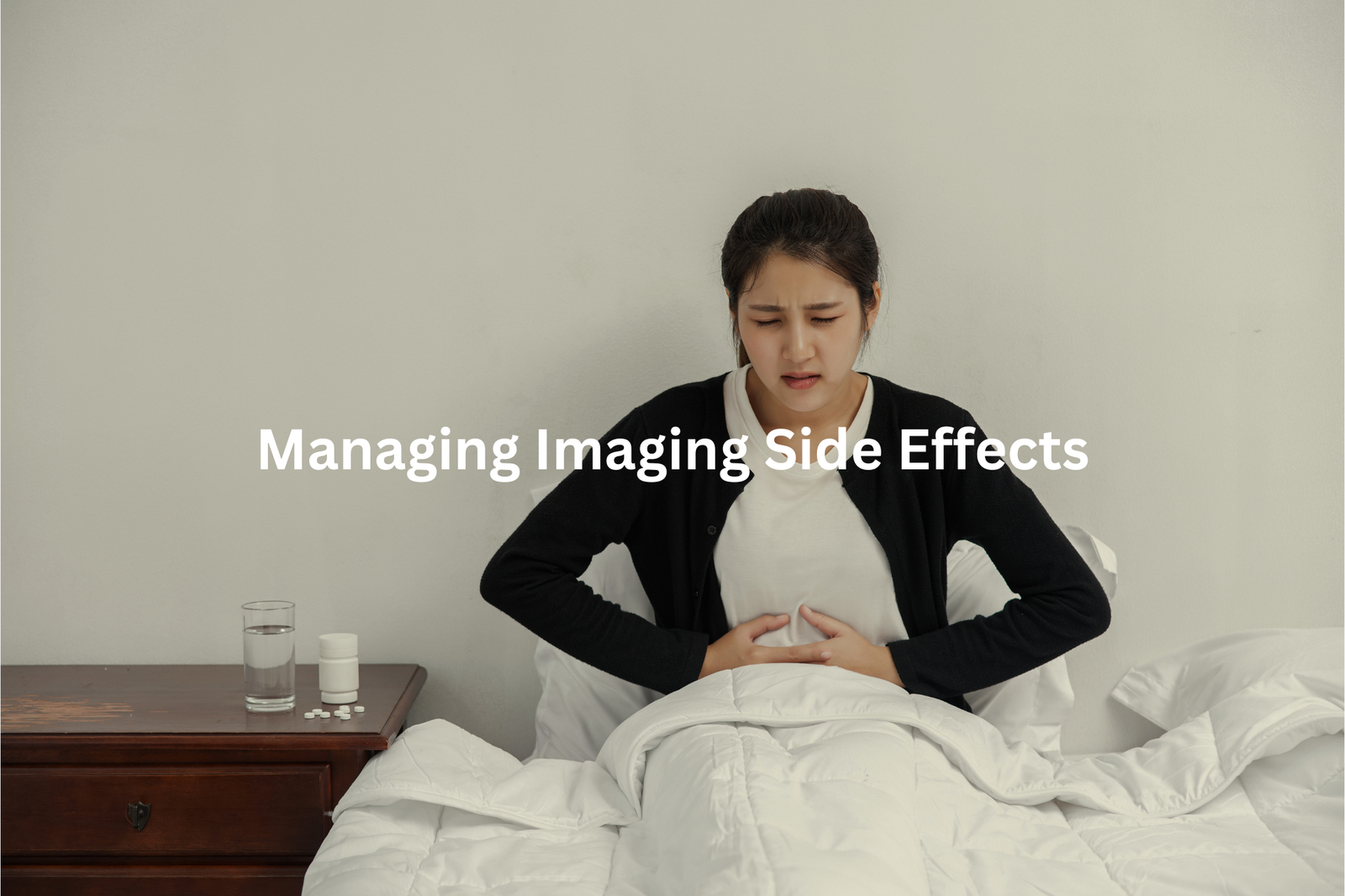
Medical imaging scans affect people differently. While some patients walk out feeling normal, others might experience temporary discomfort. The body’s response often depends on the type of scan and whether contrast dye was used.
Common side effects after imaging include:
• Feeling sick to the stomach
• Having a dry mouth
• Getting tired easily
• Slight dizziness
These symptoms typically last 24 hours or less. Patients can manage them with simple steps:
• Sip water slowly throughout the day
• Suck on ice chips for dry mouth
• Rest when needed
• Eat light, plain foods
If contrast dye was part of the scan, drinking extra water helps clear it from the body. Any unusual reactions like itching, swelling, or trouble breathing need immediate medical attention – these might signal an allergic response to the contrast material.
Most people recover quickly with rest and proper hydration. The symptoms fade naturally as the body returns to normal.
Nausea After Imaging
Nausea often follows medical imaging tests, particularly when contrast dye is used for CT scans and MRIs (magnetic resonance imaging)(3). The sensation can strike immediately or when patients stand up, feeling much like motion sickness.
Simple steps help manage post-scan nausea:
• Controlled breathing – slow inhales (4 counts) and longer exhales (6 counts)
• Lying still with minimal head movement
• Small sips of clear fluids (water or ginger tea)
• Plain crackers or dry toast
• Fresh air when possible
Most patients recover within a few hours, but lingering symptoms need medical attention. The contrast dye can sometimes cause stomach irritation, and dizziness might indicate dehydration. Drinking plenty of fluids helps flush out the contrast material – about 2-3 litres over 24 hours works best.
Patients should contact their healthcare provider if nausea persists beyond 24 hours or comes with other symptoms like severe headache or vomiting.
Long-Term Imaging Risks
Radiation in medical imaging causes concern for many patients. The invisible nature of radiation makes some people nervous about CT scans and X-rays, yet these tests save lives every day.
Several factors affect radiation exposure:
• The type of scan (CT scans deliver more radiation than X-rays)
• How often someone gets scanned
• Patient age (younger bodies are more sensitive)
A typical CT scan gives about 10 millisieverts (mSv) of radiation. For comparison, people get about 3 mSv just from natural background radiation each year. Medical professionals use strict guidelines to make sure the benefits of imaging outweigh any risks.
When doctors order these tests, they’re looking for serious problems like brain bleeds or blood clots that need quick treatment. Patients can always discuss their concerns with doctors, who might suggest alternative tests or different timing for scans based on individual needs.
Remember, medical imaging helps find life-threatening conditions that can’t be spotted any other way.
Patient Experiences with Side Effects
Side effects from medical scans often leave stronger memories than the actual procedure. The scanning process – waiting rooms, machine noises, button clicks – tends to blur in patients’ minds. Yet the physical reactions stick around in their memory.
Common side effects after scans include:
• Dizziness (typically lasting 2-3 minutes post-scan)
• Mild nausea (more frequent with contrast agents)
• Localised skin reactions (near IV insertion points)
• Temporary warmth sensation (during contrast dye injection)
Most reactions are mild and resolve within 15-30 minutes. The contrast material used in CT scans (iodine-based solutions) moves through the body naturally. Patients might notice a metallic taste or feel warm during injection – both normal responses.
Medical staff monitor patients closely during procedures. Simple steps like staying hydrated and resting briefly post-scan can reduce discomfort. Any unusual symptoms should be reported to the imaging technologist or healthcare provider immediately.
Addressing Imaging Concerns
Medical imaging rooms can bring up different reactions in patients. While some walk in ready for their scan, others pause at the doorway with questions racing through their minds.
Common patient concerns about imaging tests:
• Pain levels during scans (most are painless, though contrast dye might cause a quick sting)
• Radiation exposure from CT scans (each scan equals roughly 2-3 years of natural background radiation)
• Space concerns with MRI machines (standard tubes measure 60-70 cm wide)
Medical staff see these worries daily. For tight spaces in MRIs, clinics often provide:
- Calming music through headphones
- Two-way communication systems
- Open MRI options for severe claustrophobia
The best approach? Patients should voice their concerns before the scan starts. Radiographers can explain each step, adjust comfort levels, and provide solutions that make the experience smoother. Most imaging centres in Australia maintain specific protocols to help nervous patients through their scans.
FAQ
What are vq scans and how do they work?
vq scans, also known as ventilation/perfusion scans, are imaging tests that look at how air and blood flow through your lungs. They use a small amount of radioactive tracer to create images that show if there are any problems with your lung function or blood flow.
What are mri scans and how do they work?
MRI scans, or magnetic resonance imaging, use strong magnetic fields and radio waves to create detailed images of the inside of your body. They can help identify issues with organs, tissues, and other structures without the use of radiation.
What are lung scans and how do they work?
Lung scans, including CT scans and ventilation/perfusion (VQ) scans, use imaging technology to create pictures of your lungs. They can help detect lung cancer, blood clots, infections, and other lung-related health conditions.
How do imaging tests measure blood flow?
Imaging tests like perfusion scans and CT angiography can measure blood flow in your body, including to your lungs and heart. They use small amounts of radioactive or contrast materials to track the movement of blood and identify any blockages or issues.
What are the risks of contrast media used in imaging tests?
Contrast media, which is used in some imaging tests to enhance the images, can sometimes cause side effects like allergic reactions or a condition called nephrogenic systemic fibrosis in people with certain health conditions. Patients should discuss the risks with their healthcare provider.
How long does an imaging test take?
The time it takes to complete an imaging test can vary, but many common tests like CT scans, MRIs, and VQ scans are typically completed within 30 minutes to an hour. Patients may need to arrive earlier for preparation and should plan accordingly.
Is it safe to have an imaging test during pregnancy?
For pregnant women, the potential risks and benefits of imaging tests must be carefully considered. Some tests like X-rays and CT scans can expose the fetus to radiation, so healthcare providers may recommend alternative options like MRI or ultrasound when possible.
What are the long-term side effects of radiation from imaging tests?
Radiation exposure from medical imaging tests is generally low, but accumulating too much over time can potentially increase cancer risk. Patients should discuss their total lifetime radiation exposure with their healthcare provider, especially if they’ve had multiple tests.
Can imaging tests detect heart and lung problems?
Yes, a variety of imaging tests can help diagnose and monitor heart and lung conditions. Tests like echocardiograms, CT angiography, and VQ scans can identify issues like heart failure, blood clots, and lung diseases.
What should I know about the safety of imaging tests?
Imaging tests are generally very safe, but there are some potential risks to be aware of, such as allergic reactions to contrast dyes, radiation exposure, and complications for patients with certain health conditions. Patients should always discuss the benefits and risks with their healthcare provider.
Conclusion
Medical tests can cause worry for patients. Side effects like allergies and nausea might happen during testing procedures (including blood draws, imaging scans, or physical exams). The symptoms usually pass within a few hours, but patients should tell their doctors about any concerns.
Healthcare staff can explain what to expect and offer ways to manage discomfort. Doctors encourage questions and want patients to feel comfortable discussing their worries – that’s what they’re there for.
References
- https://www.health.qld.gov.au/__data/assets/pdf_file/0026/147563/qh-gdl-016.pdf
- https://www.allergy.org.au/hp/drug-allergy/radiocontrast-media
- https://www.caresearch.com.au/Evidence/Clinical-Evidence-Summaries/Nausea

